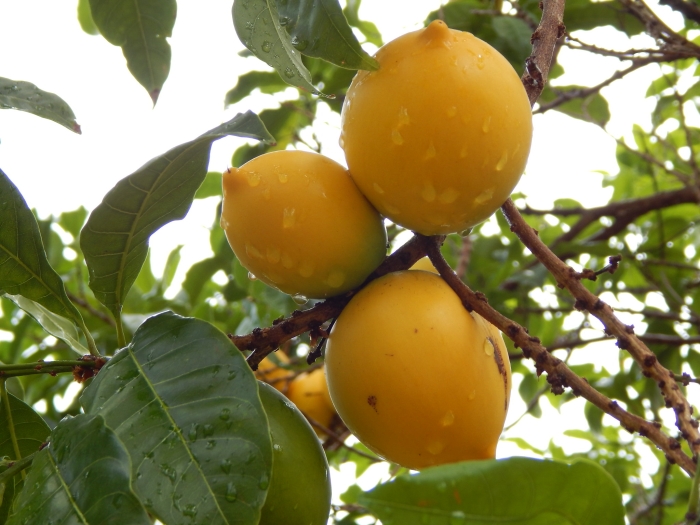Abiu
(Pouteria caimito)
Abiu (Pouteria caimito)
/
/

Forest and Kim Starr
CC BY 2.0
Image By:
Forest and Kim Starr
Recorded By:
Copyright:
CC BY 2.0
Copyright Notice:
Photo by: Forest and Kim Starr | License Type: CC BY 2.0 | License URL: https://creativecommons.org/licenses/by-sa/2.0/ | Uploader: Starr Environmental | Publisher: Flickr |




















Estimated Native Range
Summary
Pouteria caimito, commonly known as Abiu, is an evergreen tropical fruit tree native to the wet, lowland tropical forests of the Amazon Basin in South America. It is a member of the Sapotaceae family and thrives in hot, humid conditions. The tree typically grows to a height of 15-35 feet (4.5-10.5 meters) with a broad, open crown. The leaves are glossy and dark green, providing a lush appearance. Abiu’s flowers are small and white, often appearing several times a year, which allows for a continuous cycle of flowering and fruiting. The fruit is bright yellow with a smooth, waxy skin and a sweet, custard-like flesh that is highly regarded for its flavor.
Abiu is valued for its delicious fruit, which is eaten fresh and used in desserts and beverages. The tree is also appreciated for its ornamental qualities in tropical landscapes. It is commonly cultivated in home gardens and orchards within its native range and in other tropical regions. Abiu trees require protection from strong winds and cold temperatures when young. They prefer well-drained, slightly acidic soils rich in organic matter. Iron chelates can be applied to prevent chlorosis in alkaline soils. While the tree needs regular watering, especially during fruit development, it is important to avoid waterlogged conditions. Light pruning is sufficient to maintain tree shape and remove dead or diseased wood.CC BY-SA 4.0
Abiu is valued for its delicious fruit, which is eaten fresh and used in desserts and beverages. The tree is also appreciated for its ornamental qualities in tropical landscapes. It is commonly cultivated in home gardens and orchards within its native range and in other tropical regions. Abiu trees require protection from strong winds and cold temperatures when young. They prefer well-drained, slightly acidic soils rich in organic matter. Iron chelates can be applied to prevent chlorosis in alkaline soils. While the tree needs regular watering, especially during fruit development, it is important to avoid waterlogged conditions. Light pruning is sufficient to maintain tree shape and remove dead or diseased wood.CC BY-SA 4.0
Plant Description
- Plant Type: Tree
- Height: 20-40 feet
- Width: 10-25 feet
- Growth Rate: Moderate
- Flower Color: N/A
- Flowering Season: Spring
- Leaf Retention: Evergreen
Growth Requirements
- Sun: Full Sun
- Water: Medium, High
- Drainage: Slow, Medium
Common Uses
Edible*Disclaimer: Easyscape's listed plant edibility is for informational use. Always verify the safety and proper identification of any plant before consumption., Water Garden
Natural Habitat
Native to wet, lowland tropical forests of the Amazon Basin
Other Names
Common Names: Caimito, Caimo, Cauje, Abio, Abiorana-Peluda, Abiurana, Abiu-Da-Restinga, Abiurana-Do-Caranazal, Abiurana-Vermelha, Gema-De-Ovo
Scientific Names: , Pouteria caimito, Pouteria lasiocarpa, Lucuma caimito, Pouteria laurifolia, Pouteria caimito var. laurifolia, Achras caimito, Pouteria leucophaea, Achras guapeda, Labatia caimito
GBIF Accepted Name: Pouteria caimito (Ruiz & Pav.) Radlk.